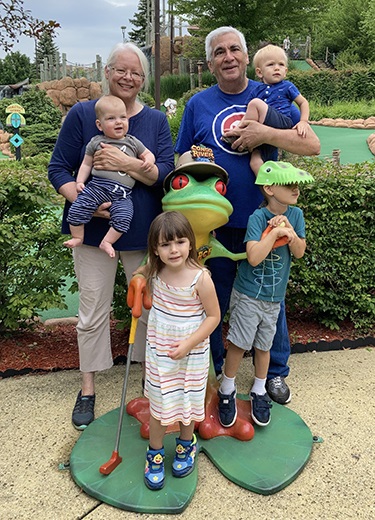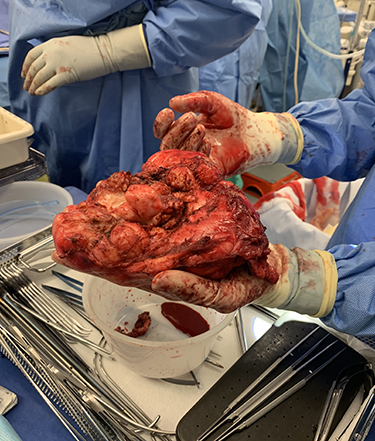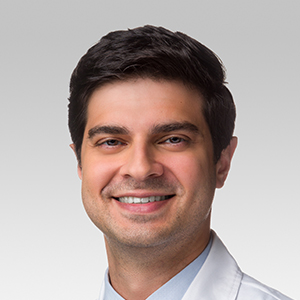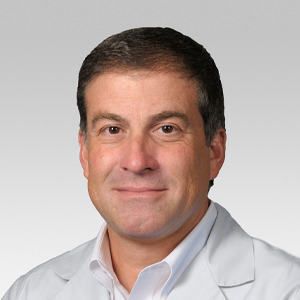Can You Get Heart Cancer?
The Short Answer Is “Yes.”
Published February 2024
** Warning: Graphic Content **
You don’t often hear about people getting diagnosed with heart cancer. That’s because primary tumors of the heart — those that originate in the heart itself — are rare. Only about 10% of all primary heart tumors are cancerous, which would affect approximately 8,000 people worldwide. By comparison, breast cancer impacts more than 240,000 people each year in the United States alone.
Why is cancer of the heart so rare? Northwestern Medicine Cardiac Surgeon Christopher K. Mehta, MD, explains that it’s because the cells of the heart get to a point early in your life when they do not divide and replicate like they do in other parts of your body. Organs like your colon and lungs are lined with epithelial tissue, which has high cell turnover. This increases the likelihood of a cell mutation, which can lead to cancer. “The cardiac muscle cells are what we call ‘differentiated,’” says Dr. Mehta. “They've been formed into their final type of cell, and because of that, they're not constantly replicating.”
This can be a double-edged sword, though. Because the heart’s cells aren’t dividing, the organ cannot mend itself after injury, such a heart attack. “When you have a heart attack, you get sustained damage to the heart muscle,” Dr. Mehta says. “Whereas if you think about other parts of the body that could potentially get an injury, like your skin, the tissue can typically repair and regenerate itself.”
The vast majority of tumors found in the heart are benign and called myxoma. These tumors typically grow on the septum, which is the wall that separates the two chambers of the heart. Although myxoma are noncancerous, they can cause blood flow problems if they aren’t surgically removed. Parts of the tumor can also break off and travel through the bloodstream to other organs, which can lead to a stroke.
The rarer cancerous tumors found in the heart are usually metastatic or secondary growths; this means the cancer started in a different part of the body and spread to the heart.
Michael DiLillo’s Story: A Football-Sized Heart Tumor
When Michael DiLillo’s phone rang early on a Saturday morning, he was not prepared for the life-altering news awaiting him on the other end. The previous day, he had undergone a series of cardiac tests, and now his cardiologist, Michael J. Severino, MD, from Northwestern Medicine Bluhm Cardiovascular Institute, was calling on the weekend.
“I remember him saying, ‘I need to tell you something important. I hope you’re sitting down,’” recalls Michael, 69, a resident of St. Charles, Illinois. “That’s when I knew we were facing something serious.”

grandparents and enjoy family time.
For several months, Michael had noticed a slight tightness in his chest. He saw physicians who told him he was going through the normal process of aging, but he wasn’t convinced.
“I was experiencing some chest issues — not severe or to the point where it limited my activity, but I knew something wasn’t quite right,” Michael says. “When I got an appointment with Dr. Severino, he ordered tests and figured it out very quickly.”
Dr. Severino informed Michael that his symptoms were the result of a large mass encroaching into his heart. He instructed Michael to go to the emergency department quickly for more testing.
“I’ve been in practice almost 30 years,” says Dr. Severino, “and I’ve never seen this type of tumor in this location.”
Collaboration for a Complex Case
Treatment would require surgery to not only remove the mass, but to also repair the damage to his heart. Michael consulted with surgeons at multiple hospitals, but none were willing to do the surgery because of its complexity and risk. Eventually, Michael met with Samuel S. Kim, MD, a thoracic surgeon at Northwestern Medicine Canning Thoracic Institute. After their appointment, Dr. Kim presented Michael’s medical information to the hospital’s tumor board, a multidisciplinary team of experts who meet to discuss complex patient conditions. The board discussed Michael’s case and worked together to determine the best treatment plan.
“The patient was running on borrowed time, and surgery was his only option for survival,” explains Dr. Kim. “Our surgeons are known for taking on the most difficult cases, and we knew we had the right team in place to help Michael.”
After discussing Michael’s tumor, the tumor board agreed it would require the expertise of a cardiac surgeon given the damage to the heart, so they consulted Dr. Mehta.
“I’ve seen a handful of these tumors, and this was by far the most aggressive-appearing cancer, especially from what we could tell from the imaging and the echocardiogram,” says Dr. Mehta. “The sheer size of the tumor, which was the size of a football, was causing it to invade the structures of the heart, which made it particularly challenging.”
Despite the tumor’s size and complexity of the surgery it would require, Dr. Mehta agreed to operate, but warned Michael and his family that it would not come without risk.
“The tumor was invading and compressing the pulmonary valve and the pulmonary artery, which move blood from the heart to the lungs,” says Dr. Mehta. “Once we removed the entire tumor, we would then be faced with having to reconstruct the heart in a way that he could live a normal life. It was a very involved surgical case.”
A Healthier Heart
After the 12-hour surgery, the team successfully removed the tumor which weighed over 1.5 pounds – more than double the weight of the average human heart.

during a 12-hour surgery.
“We all breathed a sigh of relief when this surgery was complete,” says Dr. Mehta. “Michael still has a long road ahead of him, but we gave him an opportunity to keep fighting.”
After surgery, Michael’s care team determined that his type of tumor was liposarcoma, which is a rare type of cancer that starts in soft tissues. “While Michael previously had a liposarcoma in his leg more than 10 years earlier, the pathologist felt this was a primary tumor, meaning it had started in the chest and then invaded the heart,” explains Dr. Mehta.
Even though Michael’s recovery has been long and challenging since his surgery in January 2023, he continues to grow stronger every day and is back to doing activities with his family, including walks with his wife Marianne.
“You get a whole new perspective in how important every day is — you don’t want to waste time, you don’t know how much time you have,” says Michael. “I feel blessed that we found the right people who could help us.”









